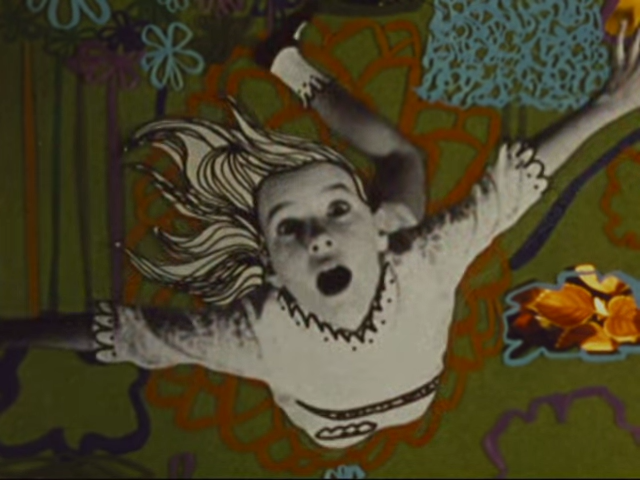David Healy, Joanna Le Noury, and Jon Jureidini present their re-analysis of pediatric antidepressant trial data in a new piece published in the International Journal of Risk and Safety. After classifying the trials as positive or negative according to primary outcome measures, the authors found that all 20 trials conducted between 1990 and 2005 were negative on their primary outcomes. All 20 also resulted in “an excess of suicidality on active treatment.”
“Despite disagreements about the data driving use of these medicines, in practice ‘antidepressants’ may now be the most commonly used drugs by adolescent girls, and children’s mental health services are attracting increasing attention,” Healy, Le Noury, and Jureidini write.

Antidepressant prescriptions to teens in Western countries have risen in recent years, despite a brief dip in use following the FDA’s 2004 black box warning. The CDC estimates that between 2011-2014, nearly 13% of American teenagers were using antidepressants, with girls’ use of the drugs twice that of boys’.
Widespread pediatric antidepressant use persists despite lingering questions about the strength of the clinical trial outcomes on which the drugs’ regulatory approval was based. It is these outcomes which Healy, La Noury, and Jureidini re-examine in their recently published study. On the matter of extensive antidepressant use among adolescents the authors write:
“This increase in use likely stems from the positive view of efficacy in the published literature, along with the absence of harms. Even hints of efficacy will lead to prescriptions…”
The authors chart the history of selective serotonin reuptake inhibitors’ (SSRIs) regulatory approval, including a 1997 NIMH supported trial of fluoxetine in adolescent depression that “reported a benefit” and subsequently provided a partial basis for its FDA approval to treat adolescent depression. Concerns later emerged regarding these drugs’ “benefits and safety” for children and adolescents, however, which led to an FDA Black Box warning being issued in 2004. In recent years, studies reevaluating antidepressant RCT data have found that the drugs present limited benefit and even potential harm to children and teenagers.
For their current paper, the authors examined all pediatric antidepressant studies conducted from 1990 to the present day — 35 in total — and classified their outcomes as positive or negative vis-à-vis the studies’ primary outcomes. They did so by reviewing Clinical Study Reports (CSRs), a 2004 FDA review, FDA reviews of the pediatric fluoxetine application, and clinicaltrials.gov company reports. The evaluated trials include studies of paroxetine, sertraline, fluoxetine, venlafaxine, citalopram, nefazodone, mirtazapine, duloxetine, L-Milnacipran, vortioxetine, and vilazodone.
The authors found that all 20 trials performed between 1990 and 2005 were negative on primary outcome measures. Two fluoxetine trials that had provided the foundation for the drug’s regulatory approval, and whose outcomes have typically been considered positive, were found to be negative upon review.
Of the 15 studies conducted since 2006 reviewed by the authors, nearly all were negative on primary outcome measures. Additionally, the authors determined that all trials between 1990 and 2005 saw an “excess of suicidality on active treatment.” They also outline SSRIs’ other documented harms to children and adolescents, which include genital numbing, obstruction of growth velocity, weight gain, and difficulties with discontinuation.
Healy and his co-authors note that pediatric antidepressant trials in OCD and “other anxiety states” have produced some positive primary outcome results. In their closing recommendations, they thus suggest that RCTs and clinical prescribing practices might more narrowly focus on SSRIs’ specific “therapeutic effect” of anxiolysis (described by some users as “emotional numbing”), which is one of the features that originally set this class of drugs apart from tricyclic antidepressants. They suggest that focusing on this effect as the primary focus of trials and treatment “would help make clinical practice more rational.” On this matter, they write:
“There is another way to think about the clinical utility of these drugs. This lies in a return to the thinking that gave rise to SSRIs, which was an effort to make a specific therapeutic effect more visible.”
****
Healy, D., Le Noury, J., & Jureidini, J. Paediatric antidepressants: Benefits and risks. International Journal of Risk & Safety in Medicine, (Preprint), 1-7. (Link)














Off label uses (‘Abuse’) of psychiatric medications – particular amongst our most vulnerable, children and elderly residents of nursing homes – is one of the great scandals of our age.
Report comment
Pretty sad all around.
Psychiatry is digging their hole bigger, because they no longer make any sense.
If MI is real, why twice as many girls? Makes no sense does it. We all know exactly why it would be more girls. It is so simple, boggles the mind they would not try to hide this exposure to their ridiculous practices.
More and more it simply exposes the shallow ways they think and believe they can get away with it in this diverse world.
I guess it’s a wait and see game.
Report comment
It is always a mistake to assume that this system works in any way on logic.
Report comment